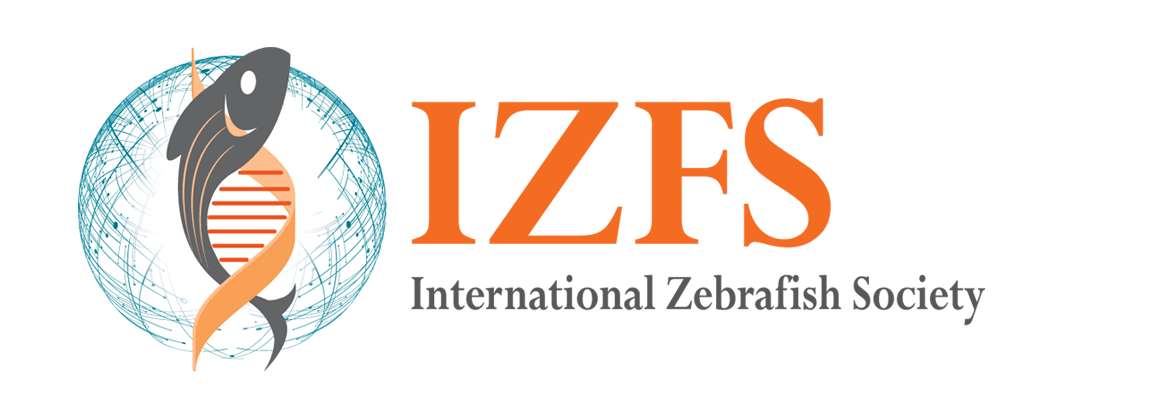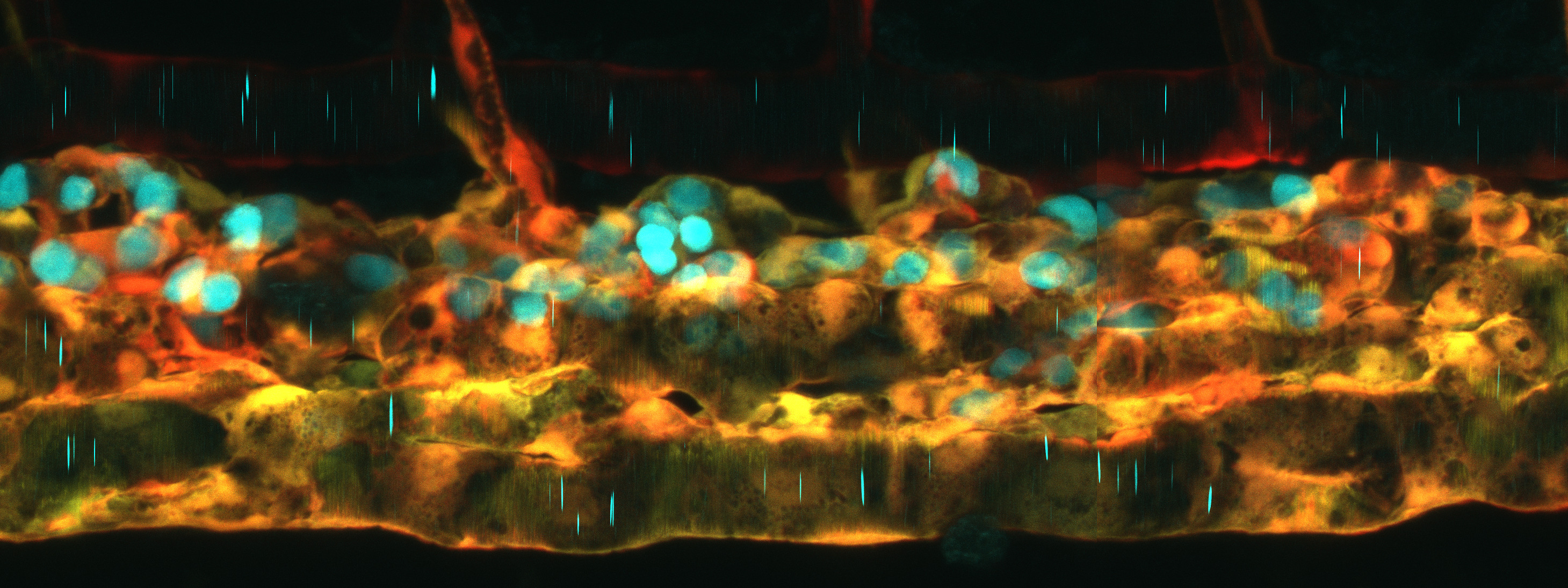George Streisinger Awardee
Dr. Judith Eisen, a professor at the University of Oregon and the 2024 IZFS George Streisinger Award recipient, perfectly embodies the qualities this award was intended to recognize: a senior investigator who has done sustained and foundational work that has opened new possibilities within the zebrafish field that benefit all research today. The overarching theme of Dr. Eisen’s research career has been to identify big, important gaps in our understanding of neural development and to pioneer novel approaches necessary for bridging these gaps. Using zebrafish, she was the first to use fluorescent dye labeling for lineage tracing of individual neurons in a vertebrate embryo. She perfected techniques to ablate individual neurons or to transplant them to ectopic locations in order to identify cell-cell interactions that determine motor neuron identity. These novel and elegant approaches, and the beautiful data generated with these methods, have been instrumental in establishing zebrafish as a powerful model for investigating molecular mechanisms of cell fate specification.
Neurobiology was not Judith’s first passion. As an undergraduate at the University of Illinois and Utah State University, she studied botany and languages – and even then did not shy away from a challenge, becoming fluent in Russian and also studying other languages. But then she took a course in embryology and was struck by the first (of several) irresistible unanswered questions: how does the honeybee eye develop? She answered this question during her Masters thesis work, which relied primarily on fixed tissue analysis using electron microscopy. This descriptive approach did not feel satisfying and, after taking a neurobiology course, Judith began a Ph. D. in the lab of Fred Lang at the Marine Biological Laboratories at Woods Hole, focusing on invertebrate muscle innervation in lobster. After a tragic accident took Fred’s life, she transferred to Eve Marder’s lab at Brandeis University where she continued to use electrophysiology and pharmacology in lobster to study motor neuron function in the stomatogastric ganglion.
In 1983, Judith came to University of Oregon for a postdoc with Monte Westerfield, planning to study electrical coupling between motor neurons and muscle cells in frog. Soon after her arrival, George Streisinger convinced them both to give zebrafish a chance – and the rest, as they say, is history. When Judith began her independent career as an assistant professor at UO in 1985, she built on her expertise with invertebrate electrophysiology to pioneer dye labeling of individual motor neurons in zebrafish. This allowed the positions and morphology of individual neurons to be traced for the very first time in any living vertebrate embryo. Judith went on to perfect ablation and transplantation of individual neurons and to identify temporal and spatial cues that determine motor neuron identity and axon pathfinding. These novel and powerful approaches allowed Judith to describe how motor neuron axons navigate to the correct muscles to innervate, and to infer cellular mechanisms which are still informing neuronal identity studies across the field. Importantly, Judith’s elegant approach and rigorous data inspired numerous investigators to adopt the zebrafish model, and set the stage for investigations of the molecular mechanisms of cell fate specification and differentiation that continue today.
In the 1990s, Judith and her lab began tackling another big, unanswered question: how neural crest cells get from their origins at the edge of the neural tube to the distant locations where they differentiate into neurons and glia of the peripheral nervous system, pigment cells and other cell types. Using powerful fluorescent dye labeling techniques combined with time-lapse Nomarski optics, Judith was the first to observe neural crest cells migrating in living embryos in real time. With her colleagues, she described all aspects of neural crest biology including how trunk neural crest cells initially arise, how they migrate, and how they differentiate. Her research group then used genetics to identify key regulators of these processes, which included the transcription factor Sox10, Delta-Notch signaling, and ErbB signaling. Collectively, these studies formed the foundation for our current understanding of neural crest biology and helped establish zebrafish as a key model for studies of this unique vertebrate-specific multipotent cell lineage.
Among the numerous derivatives of the neural crest are the neurons of the enteric nervous system (ENS). Judith and her collaborators at UO showed that the ENS not only regulates development of the gut but also shapes the gut microbiota and is essential for reducing intestinal inflammation. They also discovered that the microbiota, in turn, control development of the gut as well as development and function of the brain. And this led Judith to another big, important question in need of answers: how does the microbiome regulate brain development? This complex question is both enormously important and very difficult to address, and Judith is the perfect person to give us answers using her customary rigorous and mechanistic approach. This approach is already bearing fruit as attested to by publications in Plos Biology and Plos Pathogens, among others.
Remarkably, some of the key experiments on these and other projects are performed by Judith herself, who still loves spending time at the bench. For example, in 2017 she used transplant assays to show that enteric neurons transplanted into an ENS-deficient animal rescues their intestinal inflammation. More recently, she injected dye into single slow muscle cells to help her UO colleague Adam Miller demonstrate a role for gap junction-mediated bioelectric communication in muscle development. Participation in this project has brought her full circle to her early interest in bioelectrical signaling between muscle cells, and to her unexpected observations of direct communication between adjacent muscle cells. These observations were made right after she first arrived at University of Oregon as a postdoc, and have until now remained unexplained, but not forgotten, in a 40 year old notebook.
Judith’s love of science has guided and inspired several generations of her trainees, many of whom have made seminal contributions in their own research programs. More broadly, she has played a significant role in training new zebrafish researchers through the MBL course “Zebrafish Development and Genetics”, where she has taught for many years. Her profoundly impactful contributions have been acknowledged with many awards and honors, most notably with her elections as a Fellow of the American Association for the Advancement of Science in 2018, as a Member of the American Academy of Arts and Sciences in 2018, and her induction into the National Academy of Sciences in 2024.
Congratulations Dr. Eisen on this well-deserved award and thank you for your extraordinary contributions to our research community!




